Dr. Lazaro Lopez and Students from District 214 on Experiencing a Robust Pathways Program
Key Points
-
District 214’s approach emphasizes the importance of starting with student interests to drive engagement and success in career pathways.
-
The integration of real-world learning experiences, like internships and apprenticeships, is critical for preparing students for future careers.
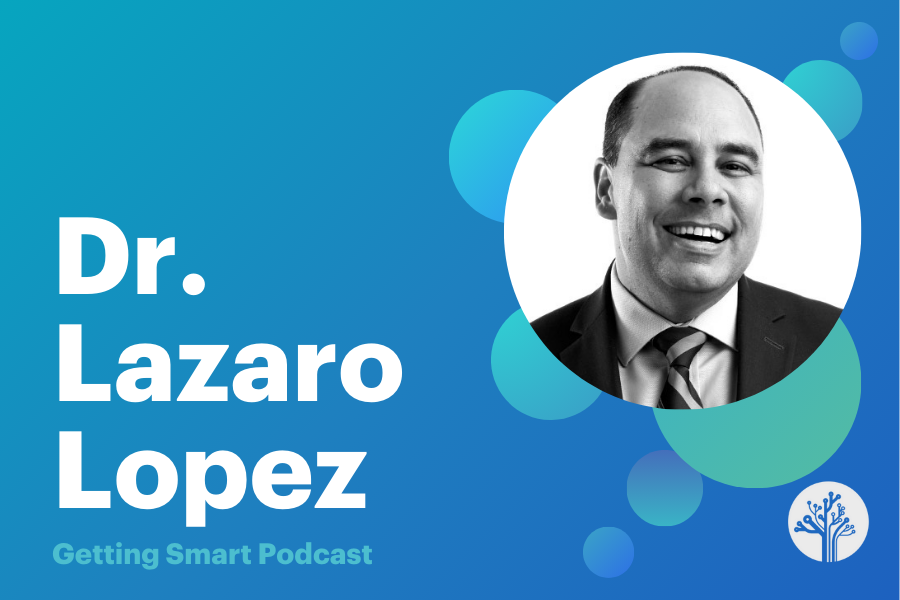
On this episode of the Getting Smart Podcast, Shawnee Caruthers is joined by Dr. Lazaro Lopez, Associate Superintendent of District 214 and students Ayana and Georgie, who share their unique paths in healthcare and engineering. District 214 is a leader in creating personalized, real-world learning experiences for students. Supported by the Bill and Melinda Gates Foundation, District 214 is part of the Illinois Accelerate Ed cohort, focusing on bridging K-12 education with postsecondary opportunities and careers. Discover how these learners are navigating their futures with confidence and purpose in an ever-evolving world.
Outline
- (02:11) Georgie’s Journey in Engineering
- (05:05) Ayana’s Path to Medicine
- (09:36) The Role of Educators and Industry Connections
- (16:09) Success Metrics and Future Directions
Shawnee Caruthers: You’re listening to the Getting Smart Podcast. I’m Shawnee Caruthers. Today’s new pathways look nothing like the traditional tracks of the past. They blend academic rigor with real-world application, offering students personalized opportunities to explore their passions and prepare for success in a rapidly evolving world.
As technology advances and the skills needed for the workforce shift, districts must embrace innovation and intentionally design systems that allow these modern pathways to thrive. District 214 is leading this charge, creating initiatives that empower students to not only dream about their futures but actively prepare for them.
This work requires districts to take stock of their current efforts, identify gaps, and establish the enabling conditions necessary to ensure pathways align with learner needs. By doing so, District 214 is equipping students with the tools, experiences, and confidence they need to navigate an ever-changing landscape and build a purpose-driven future.
District 214 is a critical part of the Illinois Accelerate Ed cohort supported by the Bill and Melinda Gates Foundation. Accelerate Ed is built on the idea that high school can provide early access to quality higher education in ways that incorporate work-connected learning and have long-term benefits for students.
This initiative helps state-based groups plan and build accelerated pathways between K-12 education, post-secondary education, and careers. Today, we’re joined by Liz Lopez, Chair of the Illinois Community College Board and Associate Superintendent for Teaching and Learning at High School District 214.
We’re also joined by students Ayana and Georgie. Welcome all. How are you all doing today?
Dr. Lazaro Lopez: Hi, Shawnee. Thanks for having us.
Shawnee Caruthers: Yeah, of course. I’m so excited. Anytime we get to interact with students, it’s always a great day. Georgie, we’re so excited to learn from you. I’ll start with you.
Georgie’s Journey in Engineering
Shawnee Caruthers: You are a senior at District 214. Can you tell us about your pathways and what you love? In what ways have you benefited?
Georgie: Yeah, so I always knew that I liked building stuff from a pretty early age. Going into high school, seeing the crazy amount of engineering and STEM courses that Hersey had was pretty fun. What I really liked over the last four years was how easy it was to shift. I started off taking an intro class, which I think is now required, but it wasn’t at the time.
I’ve taken IT classes, aerospace classes, and computer science classes. It’s really allowed me to try out a lot of different fields rather than just sticking to one the whole time. I started off really thinking I wanted to do computer stuff. I took a lot of computer science classes and then went for maybe a little less computer stuff. For me, District 214, I really liked its flexibility and its pathway programs.
Shawnee Caruthers: I’m intrigued when you said that when you went in thinking computer science or computer stuff, then you changed your mind. So what made you think that computers were for you? And then what made you think that computers weren’t for you?
Georgie: I started off my freshman year. I took that intro class, right? I did my own little tinkering stuff. Then from freshman to sophomore year, I took an internship. I interned at Ford General Motors, a car dealership, mirroring an auto mechanic, which I thought was super cool. They wanted to give me the full hands-on experience. So my first three days were three full shifts, like 8 to 5 every day working as an auto mechanic. It was hard. It was a lot of physical labor. I’m like, I don’t really love this. After that, I took an aerospace class in my junior year. I really needed to see if I liked computer stuff. So I took two IT courses. I took an in-school internship for IT. Dove all the way in and said, I’ve done a lot of this. I’m not really excited about this. What else is there? There have been a couple of different times where I’ve tried something. There’s a lot of opportunities to try it. And then if I don’t like it, I can always switch to something else.
Shawnee Caruthers: Tell me how valuable that was for you because if you’re like, Oh, I’m going to be an auto mechanic. And had you not had that experience of those three shifts, what do you think would have happened if you continued down that journey without having that application?
Georgie: I think I would have wasted a lot of time because there’s a lot of effort that goes into any field of engineering and a lot of specialty knowledge that you have to learn. If you never actually try out what you would be doing, once you gain that knowledge and you don’t like it, it could be a lot of wasted time and energy.
Shawnee Caruthers: And money. I’m sure Ayana, I don’t want to speak for you, but maybe you agree. I want to hear more about your pathway and your experience.
Ayana’s Path to Medicine
Ayana: I come from a Middle Eastern household, so this idea of becoming a doctor was already in the air for me. To give some context on what got me into my career pathway, it’s a funny little story. All of my mom’s side lives in Australia. We visited, and my older cousins were playing surgery simulator games on coolmathgames.com. I thought that was really cool, and I was so intrigued by this idea that, Oh my god, there are doctors out there that just cut into you and fix you up if you have some sort of disease.
I took that with me back home, and all I would do was play those cool math surgery simulator games on my PC. That eventually translated into me creating a YouTube account and saying that my birth year was 1930 to bypass the age filter to watch live surgeries online. Yeah, it’s quite the discovery I made. This was all when I was like nine or 10. I knew from a very young age what I wanted to get into. I’m actually on the opposite side of what Georgie was saying. We have a handbook with the courses that are offered that fit within the pathway. I really liked the organization of that. It was really helpful for me to know what steps exactly I needed to take to properly build up my knowledge of the medical field. It started with two intro courses. I took Intro to Healthcare 1 and Intro to Healthcare 2.
Then you build on that with a dual-credit college course called Medical Terminology. You start to dip your feet into the water and really understand that medical terminology is like its own language.
So first you get to see a sneak peek of the rigor that goes into being pre-med or going into the healthcare field and what that looks like. From then, you go into the Certified Nursing Assistance course and put all of that into action and apply it to real-life situations. I really appreciate that organization. It really helped guide me properly. With the experiences of the Certified Nursing Assistance course, I’ve been able to determine that I really do want to continue going into medicine. So that’s my story.
Shawnee Caruthers: You look great for someone born in 1939, let’s be real.
Ayana: Thank you so much.
Shawnee Caruthers: That’s such an interesting story. It sounds like you really took learning into your own hands. Do you think you would still be as interested in medicine if you hadn’t done some of those hacks along the way with the surgery simulator, watching live surgeries, etc.?
Ayana: I think I still would have, honestly. In general, the way that I see myself is that I love to help others. I’m a very big empath. Even for my letter of recommendations, one big common thread between all of those letters was that I was very empathetic. So my love for helping people and my tendency to put others before myself sometimes makes me see myself fitting within that career pathway.
Shawnee Caruthers: I’m glad you brought up the fact that you’re very empathetic because when you were talking about your family, I think you said your mom’s side of the family lives in Australia. What has it done for you in terms of having more global empathy and bringing that into your pathways?
Ayana: It’s funny you mentioned that. In terms of connecting that to my post-secondary endeavors as well as my plans in general, a typical pre-med student actually goes into one of the three big sciences, right? They’re going to major in biology, chemistry, or physics. I’ve taken a somewhat non-traditional route, which is going into public health. That sprouted from my background and culture. Being a minority in the Middle East, even as an Assyrian, we don’t really get much recognition in terms of media or what our traditions and values are as a community.
Seeing what’s going on in the world right now, especially in that region, not to bring politics into it, but seeing how many people are being affected by these things makes me want to continue to learn and really bring in my personal experience and voice to it while also trying to help others.
Shawnee Caruthers: Laz, I love what Ayana and Georgie are saying, like how they’ve been able to source themes for their lives. Ayana talks about healthcare, while Georgie talks about engineering, but more importantly, Georgie says he likes to build things or enjoys hands-on activities, and Ayana says she likes to help people.
Understanding that can look different in any context or pathway.
The Role of Educators and Industry Connections
Shawnee Caruthers: Laz, I want to hear about your own unique pathway because I think sometimes we forget as leaders that we have a unique pathway as well. We’d love for you to share about that. Then, as you think about your own pathways program and how unique it is, and listening to these students, what is making you most proud about the work that you all have been able to do so that we have students like Georgie and Ayana who have some clarity?
Dr. Lazaro Lopez: Yeah, I would just start there. Both of them are just so impressive, and they are the epitome of what we’ve tried to build over the last decade here in the district—just that students can discover their future. Sometimes, like you said earlier, the process of elimination helps figure out what they really want to do, like Georgie did, or students that walk in already excited and engaged. It’s just so powerful. It brings me joy listening to each of them. The work really started to some extent from my pathway because I did not become an educator until I was almost 30 years old.
I’ve had quite a few different jobs. I grew up in the city and was in the military for several years. I did not actually earn my degree until much later. The work of the pathways really started at Wheeling High School. When I became principal there, my desire was to help other students find their future so that they didn’t have this sort of lost decade.
I wanted to ensure that they could make better, more informed decisions and have this momentum effect leaving high school, where they’ve engaged in these courses as well as early college credit or early credentials and networking experiences like these internships, which really put them on this powerful step, right?
Another thing I would say is Ayana really talked about the handbook. We’ve leveraged our electives. We still have the same graduation requirements we always have, but we’ve front-loaded the electives and said, we know you have to do English and math and all of these required courses. Let’s drive your high school experience through your elective choices and what is inspiring and what you want to investigate. I just think all of that’s powerful.
Shawnee Caruthers: When you talk about electives, that is a powerful way to get learners to lean in, but some districts sometimes have a problem or a challenge with shifting from that elective thinking into strategic pathway alignment. How have you all been able to do that crosswalk in a seamless way so that your pathways continue to feel aligned and rigorous and not necessarily just like something that you’re doing on the side?
Dr. Lazaro Lopez: This does define us. It drives all of our work. There really were three key principles that we built them on from the beginning. We looked at every single course we were offering and wanted to ensure that each course sat within a sequence that led beyond high school—every single elective and even our core requirements.
Second, we wanted to make sure that in those sequences of courses representing any of our pathways and the 16 national clusters, there were some embedded opportunities for real-world experiences—work-based learning, internships, even full apprenticeships. Third, every sequence and every pathway had this experience at the end that either provided you with college credit or an industry credential that allowed you to make a better decision about what the next step was going to be once you graduated high school.
That was all strategic. I think most people would be surprised to learn it took us probably three to five years to implement each pathway, and we only did probably one or two pathways per year, which is why this has really been over a decades-long effort.
Shawnee Caruthers: Georgie, as we’re thinking about this ramp-up to the different pathways that exist and how they look as aligned, etc., to make it clear, I want to go back to middle school for a second for you and Ayana and just think through how prepared you felt to make a pathways choice or to be more informed around career-connected learning before you got to high school.
Georgie, do you feel like you received some great information? Do you feel like you had some good exploration in middle school that prepared you to be a little clearer in high school?
Georgie: I think I’m a more rare case, like I knew in middle school, maybe even earlier, that I wanted to build stuff. I built an electric bike. I tried getting into 3D printing. We did have a program through Hersey. We designed drones on a CAD program, cut them on a CNC machine, and got to fly them around.
With that, I got to meet the teachers and got a sense of that whole community. But I had a good idea going into it that I wanted to go into engineering.
Shawnee Caruthers: Ayana, what about you?
Ayana: In terms of opportunities for electives, in middle school, I went to MacArthur Middle School. I knew exactly what I wanted to do, like Georgie. I always knew I wanted to go into healthcare, but in terms of opportunities offered at my middle school, there weren’t many. I remember really the only electives that we could probably do were Spanish, vocal, instrumental music, and maybe consumer education and some sort of introductory technology class, but we really didn’t know much about electives until the— I forgot what they’re called, but when they introduce you to high school, like the orientations and stuff. That’s when we really got introduced to the fact that there are classes specifically for a certain career that you want to do, and you can take that in high school.
That’s how I discovered that was a thing. But other than that, I didn’t know there were even opportunities for that.
Shawnee Caruthers: Yeah. Laz, what opportunity are we missing when we don’t necessarily create a stronger connection between middle school and high school in terms of career-connected learning?
Dr. Lazaro Lopez: You really want to be able to take full advantage of all of the offerings in high school and get started as soon as possible. Illinois is one of those few states where we have independent school districts. We only have high schools in our district. We have eight center school districts that we work with. We do try to create some opportunities. For example, we have some programs specific in engineering and manufacturing where middle school students are coming to the high school campus, but we certainly think we could be doing more in our partnership with the middle schools. I will say that as we’ve developed our career pathways, the middle schools are significantly more interested in trying to align and create opportunities for students to explore and understand what’s coming.
Shawnee Caruthers: Yeah. I’m sorry, Ayana, were you about to add something to that? All right.
Success Metrics and Future Directions
Shawnee Caruthers: As we think about what’s coming and you all are measuring success of the programs or the pathways that Ayana and the others have, what has success looked like for District 214?
Dr. Lazaro Lopez: Here’s what I’m excited about. One of the reasons we have had the amount of visitors that we have is really because we’ve been able to scale. There’s a lot of these particular strategies that are being used.
Of our 12,000 students, 92 percent are identifying a career pathway of interest before they graduate. We actually have 92 percent in college classes, and 84 percent are earning college credit by the time they graduate. Our average student is earning anywhere from 8 to 15 semester hours of college credit before they walk across their stage. It’s not because we have any interest in being a college or replacing that experience. It’s because we want to create that level of self-efficacy, particularly for our first-generation students who may not know that they belong on a college campus or that they belong in a career pathway, regardless of what kind of post-secondary training it requires.
We want them to have that belief that they can be successful. That’s what the purpose of that is. We’re very excited. We have over 1,500 partners working with us to create these unique experiences for our students. Half the students are graduating with a work-based learning experience. I think those are some of the metrics that we’re proud of that really make me excited about the work that we do.
Shawnee Caruthers: You’re still having.
Ayana: Yes, it is. Yeah.
Shawnee Caruthers: What has that experience been like for you?
Ayana: Prior to this internship, actually, this is the first year that I’m doing a District 214 internship, and I’m really glad I did it. Prior to that, though, I got my certification in Nursing Assisting, so before even getting into the hospital environment. I was more exposed to a retirement community, and I was able to, through the CNA class offered through Harper College at Wheeling High School, earn my state certification to work as a nursing assistant. When it came down to doing this internship, it was really helpful for me. They had me doing some really basic things at first, like restocking supplies, going around, and talking to different patients in their rooms. I was on the surgical unit, so a lot of them were post-op patients or pre-op patients. It was really great. I got to know the care team and everything. What it really came down to, for me at least, was less about gaining skill, because once they discovered that I was a CNA, they allowed me to do a lot more. They started letting me take blood glucose, take vitals, and reposition patients in the bed. What it really came down to was the connections and networking that I was able to get myself into. I think that’s really important. My intern supervisor, Ms. Georgia Pashos, I love her so much. She’s absolutely the sweetest person I’ve ever met, for real. She’s trying to get me hired at the hospital to be a nurse care tech on the mother-baby unit or within pediatrics, because Lutheran also has a children’s hospital. She’s been very open and very supportive about giving me a referral or trying to get me a job. I’ve been looking to get a job at the hospital, transitioning out of the nursing home environment. Through this internship, I’ve been able to make those connections, and it’s really been beneficial. I’m in the process of making that transition right now.
Shawnee Caruthers: Yeah. Georgie, as you’re listening and we’re listening to Ayana talk about, just for that particular example, the lady at the hospital who is advocating on her behalf to help her. As you think about that, from your perspective, who do you feel like in the industry has been really instrumental in helping to push you forward? What has that investment or connection to those kinds of networks done for you, or why do you feel like that might be valuable for other learners?
Georgie: I have fewer connections to actual people in the industry, at least involved with District 214. I know some people who are, but at District 214, engineering teachers are who I go to for pretty much anything, and they’ve always been around. Last year, I made some of my closest friends who are away at school now, but we would have completely random project ideas. Like we put a fake flux capacitor in their car, built rockets, and some things that I shouldn’t probably talk about on a podcast, but they were a lot of fun, right? They revolved around a pathway. Any question we ever had, the teachers were there to help us with it. When I first got into 3D printing stuff, which I do too much of now, it was one of our teachers that initially showed me. I made a CAD model for it, and using printers at the school, he talked me through it and taught me what to do. Another thing, Hersey has a partnership with Fusion, which none of you guys probably know, but normally it would cost me over a thousand dollars a year to use this program, and I could use it for free, which is really nice, which has led to a lot of independent learning. Even though I’m doing all this stuff on my own to try to teach myself things, I’ve always had all those engineering teachers there that if I ever had a question, I could always reach out to them. I had a letter of rec from them. If I needed any referral for anything, they’re the people I’m going to ask for it. Although they’re not working currently in the industry, some of them have, and they have that experience, and they’re always there to help with questions.
Shawnee Caruthers: Laz, this makes me so happy to hear the things that they’re saying, whether it’s someone directly connected to the industry or, as Georgie was saying, even the teachers inside of the building, how the adults are using their connections and resources to create real social capital for learners. As Georgie was saying, he’s correct in terms of some of these programs can be a real barrier for students, like Fusion, because of the cost, but how they get access to them, which, like you said, fosters independent learning. As you’re hearing all of those kinds of outgrows from these learners who are part of the pathways program, are those the kinds of testimonials you expected to hear when you set up this program? Or are you surprised even by what the learners are sharing?
Dr. Lazaro Lopez: I want you to know I am always impressed and always surprised. It’s just so exciting because it just takes on a life of its own, and Georgie and Ayana are wonderful. I know there are literally thousands of other students who are going through the same experiences. It’s really just because our community has stepped up. Our employers have stepped up, and our teachers have stepped up in embracing what really wasn’t a traditional role for high school. It changed the conversation from what do we need to do to graduate high school to how are we a purposeful and relevant step in the independent growth of this young person so that they can fully access their potential so that they can become who they want to be. I think that’s powerful. I’m always impressed and excited and surprised by all the wonderful things that are happening. I love these stories.
Shawnee Caruthers: Just thinking about all the opportunities, and it just took me back for a second, Georgie, at the very beginning, when you said that even within the pathways, you feel like there’s space to shift and have different experiences. Do you feel like you were able to fully take advantage? I know you say you’d like to build and you explore all up and down the engineering pathway, but do you feel like you had the space or the opportunity to learn about the other pathways while in your current programs? Or do you feel siloed?
Georgie: I feel like I was still pretty exposed to it because in the first three years, you’re required to take a lot of core classes. Then as you progress, obviously, you get more electives. In those core classes, I would hear a lot of stuff secondhand about the other programs. So it wasn’t like I felt isolated. I personally never had an interest, but I always heard of, the law path, the medical path. You hear a lot about it, if not from the school itself, from other students. We’ve always had fairs and flyers up in the hallways. A big thing with Pathways, which I’m sure there is at other schools, but especially at Hersey, is there is a club for absolutely everything. So I’d always see all these different clubs for every different pathway up. I never really felt blinded into engineering. I always felt like there was something else that I could try if I ever wanted to.
Shawnee Caruthers: As you were talking about the different industry leaders that you interacted with, and I’m sure they talked to you a lot, whether you were at the retirement center or at the hospital and all the different spaces you’ve been in, what was some of the advice that those industry leaders are giving to you?
Ayana: Some really good advice that I got, especially as a certified nursing assistant, is that I am empathetic, but sometimes it’s really hard to see different kinds of perspectives from people. One thing that my boss told me is that when you’re taking care of people, especially because when I was working in the nursing home, these are people who have lost their independence. They didn’t choose this life. They didn’t choose to stick themselves in a room and have a bunch of people hovering over them all the time, giving them medication, and they can’t feed themselves or use the bathroom by themselves. The one thing that I was always told is their disease is talking, not you. So everything that they do, if, for example, they say something offensive or they’re acting aggressively or whatever the case may be, is to take it with a grain of salt. When that was put into perspective for me, it made my job a lot easier. I really appreciated that because I’m sure not only in the nursing home communities are you going to see that, you’re going to see that in every kind of specialty and every kind of field within medicine, that there’s going to be very difficult people to work with, and you just have to understand where they’re coming from and what the context is and whatnot. I’ve definitely been able to apply it outside of my job. I’ve been able to look from that perspective in multiple different situations.
Shawnee Caruthers: Yeah. No, definitely. I know. I was like, taking notes. I’m like, that has some real-world application. Again, it’s doing some mic drops here. Now. Totally. Really appreciate your ability to use it within your context and then outside in other aspects of your life. Georgie, as you think about the conversation you’ve had with teachers or even maybe at Ford or any of the experiences you’ve had, what is advice that you’ve gotten from other adults in the field?
Georgie: I’ve gotten a lot of advice, and getting to know these teachers through robotics, which is a team we have. We build battle bots, blow them up. It’s great. One thing I’ve always really liked is they always emphasize keeping things simple, which we would apply to some kind of design that you’re trying to make. Let’s say we were making a weapon for a robot, and we had way too many struts. Didn’t need it. It was too heavy. What can we do to make it more efficient, make it easier? I took that to everything that I did, what can I do to keep things as straightforward as possible? Do I need to do all of these things or do I only need to do this? Something else I always really liked was they always told me there was something more to learn. No matter what we were working on, there was a guy who did it on YouTube. There was some chat on Reddit. There was some random guy who was a friend of someone who knew something. The idea that there’s always information out there, it just depends on how hard you look for it, I also think was really valuable. Another thing, especially with robotics, was leading people by collaborating with them, not necessarily telling them what to do. We had a large-ish team, probably like five or six people. Some people have more knowledge than others. We all needed to work together to do something. In engineering, there’s a lot of that. There’s a lot of that teamwork, that collaboration. I learned that trying to get everyone to work the best together, not necessarily just do a job, was a lot more effective than just telling people what to do. So that’s some wisdom that I gained from people giving me advice.
Shawnee Caruthers: And that wisdom is real. Ayana is doing the finger snaps, so is Laz. We appreciate that. Keep it simple. As Laz said, solid advice from both of these young people. Just leaning in a little bit on what Georgie is saying about keeping things simple. It seems like that’s what you all have done at District 214. The students are directly benefiting from that. How did District 214 manage to keep it simple?
Dr. Lazaro Lopez: I think we kept it simple because we started small and we started in our areas of strengths. We expanded based on student interest and student needs. We know that students are using these pathways to explore and discover, and we can’t do it all. We can’t create a pathway for every single job, but we’re creating pathways that are representative of clusters and fields so that a student can get a sense and a step into that space to see if it fits them and if they want to explore it even more. That’s what those work-based learning experiences are for, to really do that deep dive and have an affirming experience after you’ve done some coursework. We’ve worked hard and we’ve also done it one step at a time. We really did build one pathway at a time. It began with manufacturing. Healthcare was second. We also did facilities, which we haven’t really spoken about, but we have invested in our spaces at each of our school sites that represent each of these facilities. We have really impressive manufacturing facilities and hospital labs in every school. We have courtrooms in every school in order to bring it to life and to make students feel like it is a different space.
Shawnee Caruthers: You brought up some other pathways, which is great. Can you share a little bit more about your IT pathway?
Dr. Lazaro Lopez: Certainly. The IT pathway really began when we started work with the IT pathway. We had maybe one or two sections of AP Computer Science. It was dying on the vine. There was a handful of kids, and I wasn’t sure why there weren’t more kids interested because there were all these scholarships out there and jobs. It was right around when the iPad started, just shortly after. What we did is we connected it to app development, and we made our intro course app development because every kid wanted to learn how to build an app for their iPad and for their phone. We started there and then built the IT pathway on that course. That was the orientation course into the program, and then it had the networking lane as well as the software development and programming lane as well. Now we have 1,200 students in that pathway. But it’s because we started where the students were.
Shawnee Caruthers: You started with the students where you kept it simple. I can literally spend the next few hours talking to you all. Laz, it’s been so great to have you here. Ayana and Georgie, I love, love, love talking to learners and the wisdom that you all are dropping. It’s insane. You all continue to make the case that we talked about in the intro about in this ever-changing landscape that we call work, we have to start doing things differently. It is evident that things are shifting just by the conversation we’ve been able to have with Ayana and Georgie today. Thank you for your time. Thank you for sharing with other learners about the benefits of pathways. Thank you, Laz, for your contributions as well. We’ll continue to follow your journey and root for you all, Ayana and Georgie. Thanks for being here on the podcast today.
Lazaro Lopez
Lazaro Lopez serves as Chair of the Illinois Community College Board, Associate Superintendent for Teaching and Learning at High School District 214, and Chair of the Youth Apprenticeship Working Group for the Illinois Workforce Innovation Board Apprenticeship Committee. Dr. Lopez has been featured in the U.S. Chamber of Commerce Profiles of Change and Achieving Tomorrow series and recognized as the 2013 Illinois Principal of the Year for his tenure as Principal of Wheeling High School. Dr. Lopez has served as the founding Secretary of the Board for the Partnership for College Completion and as an adjunct faculty member in the graduate educational leadership program at Roosevelt University and Aurora University’s doctoral program in education. He speaks statewide and nationally as an advocate for relevancy in schools, business partnerships, and career pathways. Prior to his leadership in education, Dr. Lopez served as a training non-commissioned officer in the U.S. Army, a small-business owner, and a corporate trainer. Dr. Lopez earned his Doctor of Education in Curriculum and Instruction from Aurora University (2010), Master of Arts Degree in Educational Administration from Roosevelt University (2004), and a Bachelor of Science Degree in Communication and English from Illinois State University (1998).
Links:
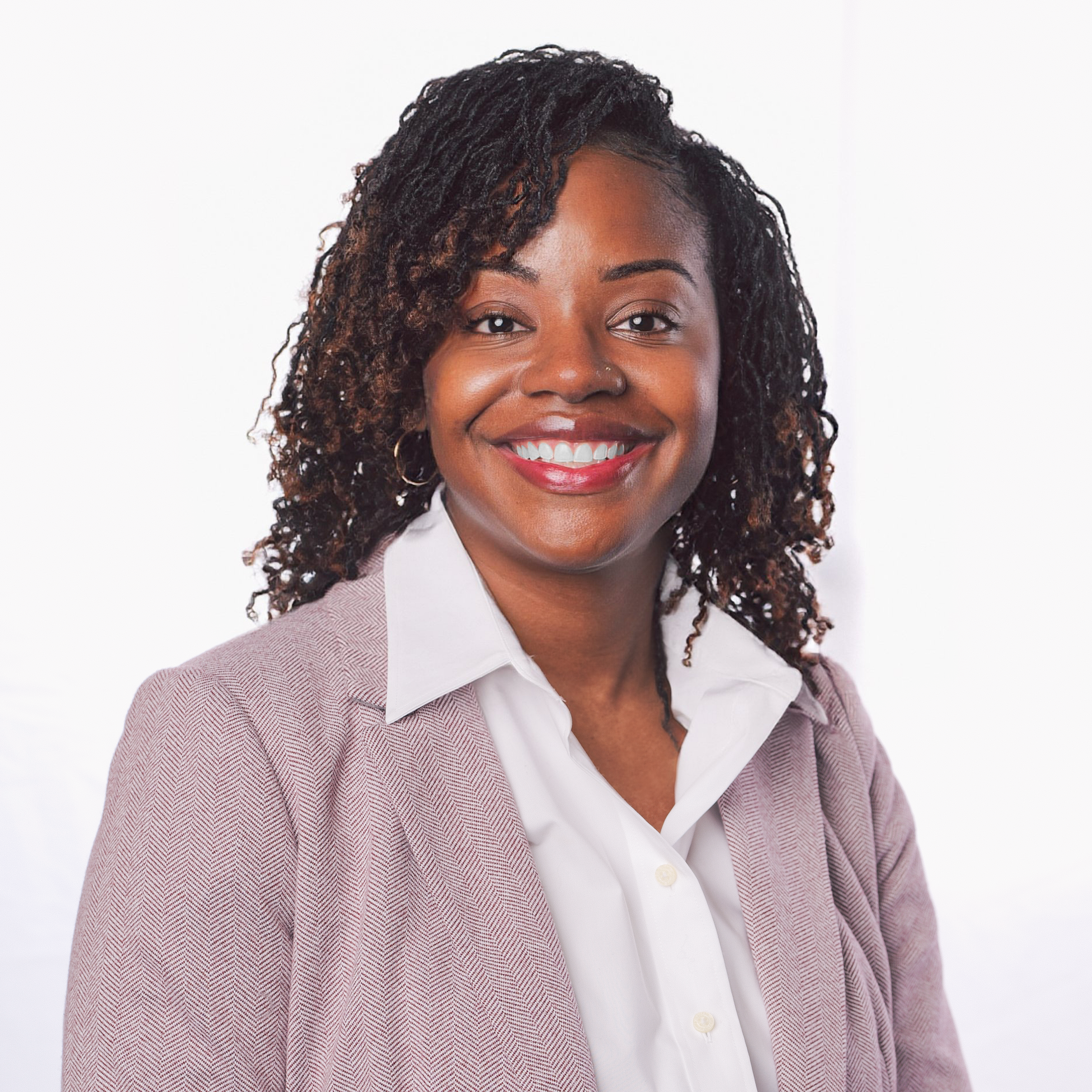


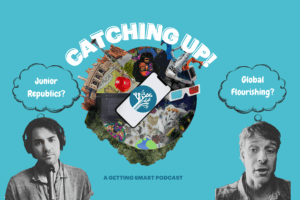
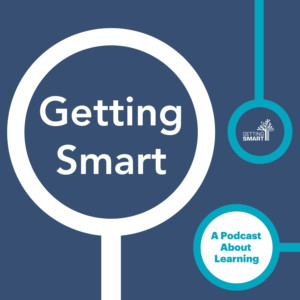

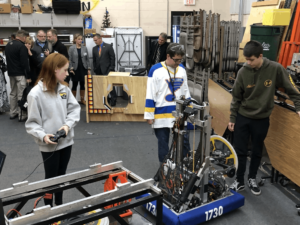
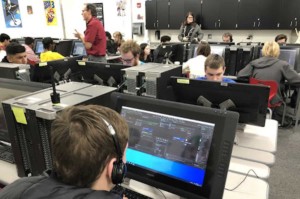
0 Comments
Leave a Comment
Your email address will not be published. All fields are required.